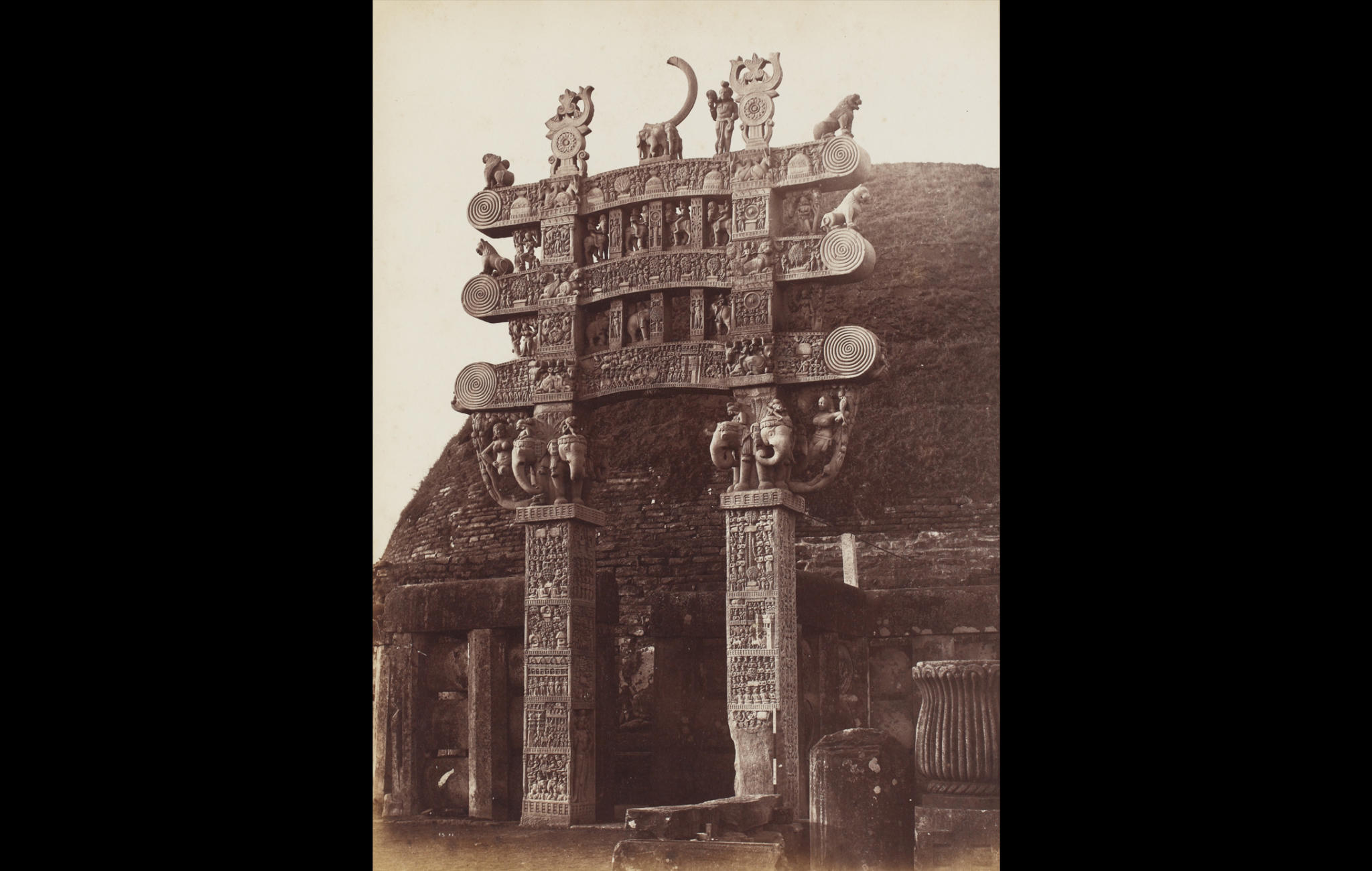
This photograph is of the Sanchi Stupa, which is one of the oldest and finest examples of Buddhist architecture synchronizing with the rise and fall of Buddhism in India. It was taken in 1882 by Lala Deen Dayal.
The Sanchi Stupa is one of the oldest and finest example of the architecture of the Shunga era. It consists of a large hemispherical dome, which was built over another stupa that dated back to the 3rd century BC and was built by the Emperor Ashoka Maurya. The stupa was later extended around the 1st century BC under the Satavahana period in the 1st Century when the four elaborately carved gateways were added. The northern gateway particularly, consists of two square posts crowned with a group of four elephants and two shalabhanjika (figures of women standing near a tree and holding a branch). The gateway features three architraves or beams with scrolled ends. On the first two, four lions crown either side. The gateway is completely covered with sculptures depicting scenes from the Buddhist Jataka tales. These include tales of Prince Vessantara demonstrating excellence or perfection in the act of giving (dāna pāramitā).
The ruins of Sanchi were discovered in 1818 AD by Major General James Taylor of the Bengal Cavalry during his military campaigns. The scholarly documentation of the site was started by Alexander Cunningham in 1851, while it was restored by Sir John Marshall, amongst others, around 1912-1919.
The photographer of this picture, Lala Deen Dayal, ran successful studios called Raja Deen Dayal and Sons in Indore, Secunderabad and Bombay and was appointed photographer by Indian royalty including the Nizam of Hyderabad, as well as by Queen Victoria. He was regarded as India’s premier photographer in his lifetime. To read more about him, click here.
Title
Northern Gate of Sanchi StupaPeriod
1882Photographer
Lala Deen DayalMedium
Albumen Silver PrintDimensions
H: 27 x W: 25.5 cmAccession No.
2018.7.17Genre: Photography
